Exploring Timeless Beauty: Engagement Rings Unveiled

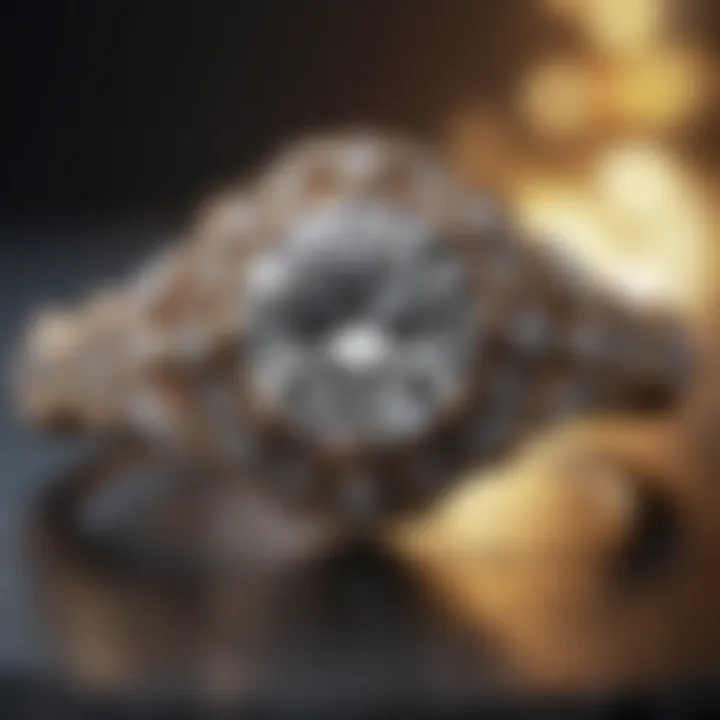
Intro
Engagement rings have fascinated individuals across cultures and eras, serving as powerful symbols of love and commitment. Their allure extends beyond mere adornment, deeply intertwined with history, culture, and craftsmanship. In examining the most beautiful engagement rings of all time, one must consider various aspects, including the types of gemstones used, historical significance, and cultural implications.
This article delves into the enchanting evolution of engagement rings, exploring not just their aesthetic appeal but also the rich stories they tell. By understanding the intricate details of these timeless pieces, both enthusiasts and professionals can appreciate the artistry behind each ring, its significance in history, and the current trends shaping the jewelry market today. As we embark on this journey, we uncover the delicate interplay between beauty, tradition, and modernity that defines engagement rings.
Gemstone Overview
Definition and Characteristics
Gemstones are naturally occurring minerals that are prized for their beauty and rarity. They come in various forms, each with unique qualities that contribute to their desirability. Generally, gemstones are classified based on their hardness, brilliance, and clarity. Such qualities dictate not only their value but also their suitability for various types of jewelry, including engagement rings.
Many gemstones are transparent or translucent, allowing light to pass through and create a captivating play of colors. Diamonds, sapphires, and emeralds represent the pinnacle of engagement ring options, each exuding its charm and characteristics. The hardness of a gemstone, measured on the Mohs scale, determines its resistance to scratching and wear. For instance, diamonds rank highest at 10, making them an ideal choice for everyday wear.
Classification of Gemstones
Gemstones can be broadly categorized into precious and semi-precious stones. Precious stones, like diamonds, rubies, sapphires, and emeralds, are considered rarer and more valuable due to their limited availability and unique qualities. Semi-precious stones, while still beautiful, usually are more abundant and feature a wider variety of colors and forms. These can include garnets, amethysts, and topaz.
Each gemstone carries its own lore and significance. For example, sapphires symbolize wisdom and nobility, while emeralds are associated with fertility and rebirth. Understanding these classifications and their meanings enriches the context of engagement rings, allowing buyers to make informed choices based on personal preferences and meanings.
Historical Significance
Ancient Uses and Cultural Importance
Engagement rings have a storied history, deeply rooted in ancient traditions. The earliest known use of engagement rings dates back to ancient Egypt, where rings were made of braided reeds and were thought to symbolize eternal love. In Rome, the tradition evolved further with the introduction of iron rings worn by women as a symbol of their betrothal.
Different cultures have also embraced distinct styles of engagement rings. In medieval Europe, for instance, it was common to insert a gemstone into a band of gold or silver, often incorporating intricate designs that reflected the couple's heritage. In contrast, modern trends have shifted towards simpler designs, focusing on the brilliance of the central gemstone.
Myths and Legends Surrounding Gemstones
Throughout history, various gemstones have been surrounded by myths and legends that further elevate their significance in engagement rings. For instance, diamonds are often associated with invincibility and purity, while sapphires are believed to offer protection and good fortune.
Historical Context of Engagement Rings
The historical context of engagement rings provides a crucial framework for understanding their significance and evolution over time. These rings are not merely decorative pieces; they carry deep emotional and cultural weight. They symbolize commitment, love, and a promise for the future. Recognizing this history enriches our appreciation for the designs and materials used in engagement rings, giving insight into how societal norms and personal values have shaped what these rings represent.
Ancient Traditions
Engagement rings have a rich history that dates back thousands of years. The earliest known use of a ring as a symbol of betrothal can be traced to Ancient Egypt, where rings made of braided reeds or leather were exchanged between couples. This act had deep meaning, as the circular shape of the ring represented eternity. In ancient Rome, the giving of rings marked the legal aspect of a marital agreement, specifically the "stipendium" or dowry. The engagement ring was often adorned with iron or gold, signifying strength and permanence. The Romans are also credited with introducing the concept of diamond engagement rings, a tradition that continues today.
Symbolism Through the Ages
The symbolism of engagement rings has evolved significantly over the centuries. For many cultures, these rings serve as tokens of fidelity and love. In Medieval Europe, rings often contained religious symbols, reflecting the spiritual dimension of marriage. The influence of Christianity brought new meanings to engagement rings, emphasizing the sacredness of the union.
As we moved into the Renaissance, gemstones became prominent in engagement rings. Wealth and status were reflected in the materials used, with rings crafted from precious metals and adorned with beautifully cut stones. Each gemstone came with its own symbolism: diamonds represented invincibility, sapphires were believed to protect against envy, and emeralds symbolized hope.
"Throughout history, engagement rings have bridged cultural divides, embodying the shared values of love and commitment across civilizations."
In modern times, although the designs and materials may have shifted, the essence of the engagement ring endures. Contemporary society places high value on personalization, leading couples to seek unique designs that tell their own stories. Today, engagement rings represent more than just a promise; they reflect individuality and the evolution of relationships in a changing world.
Notable Gemstones in Engagement Rings
Gemstones are not only decorative pieces in engagement rings; they hold deep meanings and traditions for many cultures. Their significance can heavily influence the choice of an engagement ring. Different gemstones carry various symbolic meanings, which can enhance the emotional value of the ring. Moreover, the durability, brilliance, and rarity of the stones play a crucial role in their desirability and market value. Understanding these gemstones provides insights into why they are favored in engagement rings. Each stone reflects personal taste, making it a distinct choice for every individual.
Diamonds: The Classic Choice
Diamonds have long been regarded as the quintessential gemstone for engagement rings. Their unparalleled hardness symbolizes strength and eternity. The tradition of using diamonds in engagement rings gained traction in the 20th century, especially after the 1947 De Beers campaign popularized the phrase "Diamonds are forever."
The four Cs—cut, color, clarity, and carat weight—heavily influence a diamond's quality. Cut affects how light reflects within the stone, while color and clarity impact its appearance. Carat weight refers to the size. A well-cut diamond can enhance its brilliance, contributing to its reputation as the ultimate symbol of love.
Sapphires: A Royal Alternative
Sapphires have been cherished for centuries, often associated with royalty and wisdom. The rich blue hue is the most recognized, but sapphires come in various colors, known as fancy sapphires. This versatility allows for unique designs tailored to personal preferences.
These gemstones are second only to diamonds in hardness, making them a practical choice for everyday wear. Sapphires symbolize loyalty and nobility, reinforcing their position as a favored option for engagements. The notable usage of sapphire engagement rings by Princess Diana and subsequently Kate Middleton has added to their allure and prestige.
Emeralds: A Touch of Elegance
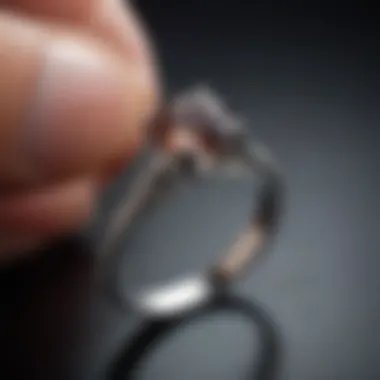
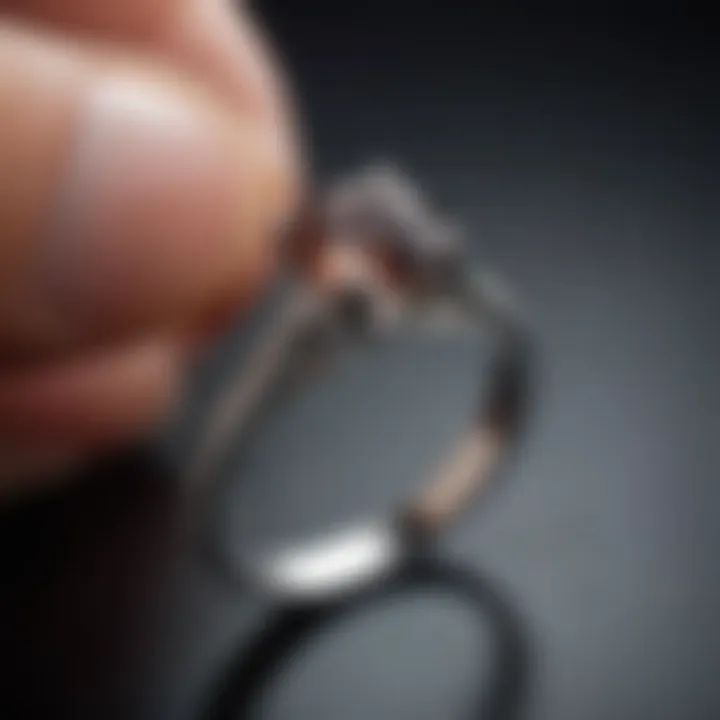
Emeralds are celebrated for their captivating green color, representing growth and renewal. They are softer than diamonds and sapphires, which means they require careful handling. This higher maintenance factor may make them less popular for some, but their beauty and uniqueness stand out in the realm of engagement rings.
Emeralds symbolize rebirth and love, making them a meaningful selection for couples. The rarity of high-quality emeralds adds to their luxurious appeal. Each emerald is distinct, with qualities influenced by their origin, making every piece unique.
Other Gemstone Choices
Besides diamonds, sapphires, and emeralds, several other gemstones are worthy of consideration. Each option carries its significance and charm:
- Ruby: Known as the stone of passion, rubies symbolize love and desire. Their deep red color attracts many.
- Aquamarine: This gemstone represents tranquility and calmness, making it an ideal choice for those who appreciate the sea.
- Morganite: With its delicate pink hues, morganite embodies compassion and promise, appealing to modern tastes.
- Opal: Opals offer a diverse color palette, representing creativity and inspiration. Their unique patterns make them a sought-after alternative.
Choosing the right gemstone can reflect personal stories and values, making the ring more than just an accessory but a part of an individual's identity.
Iconic Engagement Rings in History
The world of engagement rings is marked by profound moments and significant historical milestones. The study of iconic engagement rings offers insights into how love and commitment have been visually represented across cultures and eras. By understanding the notable rings throughout history, one can appreciate the intricate relationship between jewelry design and societal values.
Engagement rings often carry stories that reflect personal choices, trends of their time, and even influence future generations. Therefore, exploring iconic engagement rings not only appeals to jewelry enthusiasts but also to those interested in cultural history and symbolism.
Royal Engagement Rings
Royal engagement rings have long fascinated the public due to their grandeur and the stories associated with them. These rings often symbolize power, loyalty, and legacy. A prime example is the engagement ring of Princess Diana, which featured a striking sapphire surrounded by diamonds. This specific choice reflected both elegance and a royal aesthetic, which resonated deeply with the public.
Furthermore, this ring has influenced modern jewelry styles. After Diana's passing, the ring was given to Kate Middleton by Prince William, establishing a direct connection between the modern royal family and past traditions. This highlights the considerable impact that royal engagement rings can have on societal trends and individual aspirations.
Here are other notable royal engagement rings:
- Queen Victoria’s Diamond Ring: This ring was given by Prince Albert and was one of the first to popularize the diamond engagement ring in royal circles.
- Queen Elizabeth II's Showstopper: Her diamond and platinum ring, gifted by Prince Philip, has become a landmark symbol of enduring love and commitment.
Celebrity Engagement Rings
In modern culture, celebrity engagement rings are often placed under the microscope of public scrutiny. The personal lives of celebrities and their choices in engagement rings often lead to trends that many aspire to follow. An illustrative case is that of Demi Moore's stunning emerald-cut diamond ring from Bruce Willis, which drew significant attention and admiration when it was revealed.
Additionally, the extravagant engagement ring worn by Jennifer Lopez while engaged to Ben Affleck utilized a pink diamond, showcasing how celebrity choices can shift the narrative about engagement ring styles. Such choices often reflect personal style more openly than traditional royal selections, managing to create a blend of public admiration and personal sentiment.
Consider these iconic celebrity engagement rings that have garnered considerable attention:
- Beyoncé’s Diamond Ring: A flawless diamond and unique design that exemplifies modern luxury.
- Scarlett Johansson’s Vintage Ring: A light-colored stone in a unique setting, displaying individuality.
"Celebrity engagement rings often embody a fusion of personal expression and cultural significance, serving as benchmarks for trends in the jewelry market."
Understanding these iconic engagement rings not only informs on aesthetic choices but also illustrates the broader impact of fame and tradition. By delving into the crowns and hearts of the historical elites and modern celebrities, one appreciates how engagement rings speak volumes about love, legacy, and the evolution of craftsmanship.
Cultural Significance of Engagement Rings
Engagement rings hold a unique place in cultures around the world, serving not just as symbols of love but also as representations of social status, heritage, and evolving traditions. Understanding the cultural significance of these rings provides insight into their deeper meanings and the value placed on them by society. This article aims to dissect these layers, highlighting how engagement rings transcend mere adornment to embody commitment and personal narratives.
Western Perspectives
In Western cultures, the engagement ring predominantly symbolizes a promise of marriage. It stems from traditions that date back to ancient Rome, where a ring symbolized ownership and commitment. Today, it often features a diamond, a choice solidified by De Beers through their impactful advertising campaigns in the 20th century. The phrase "A diamond is forever" has contributed significantly to the ring's status as an essential element of Western engagement traditions.
From a modern standpoint, engagement rings have become a medium of personal expression. Couples may choose not just diamonds, but alternative gemstones that reflect their individuality. The significance of the ring goes beyond its physical form, representing a unique journey that each couple embarks on together. The design of the ring, preferences for particular gemstones, and the elements that make it personal enrich its cultural narrative.
- Social Status: Rings can reflect personal wealth. Larger or more elaborate rings often convey social standing.
- Jewelry as an Heirloom: Many engagement rings are passed down through generations, linking family histories.
- Cultural Adaptations: Western customs often adapt international traditions, creating hybrid meanings for rings in the contemporary world.
Eastern Traditions
In contrast, Eastern cultures present a different yet equally profound understanding of engagement rings. In many countries, engagements are celebrated with elaborate ceremonies, where rings symbolize not only love but also family approval and social contracts. The customs vary significantly from region to region, reflecting diverse cultural values.
For instance, in Indian culture, the concept of a ring can involve ornate designs often set with multiple gemstones, symbolizing prosperity and success in the couple's future. The ring ceremony, known as the "roka," marks the beginning of a relationship's formal acknowledgment by both families.
- Religious Significance: In several Eastern traditions, rings hold religious meanings, being blessed by elders or other religious figures.
- Community Involvement: Engagement ceremonies often involve the community, showcasing familial bonds and social relationships.
- Variety of Designs: Eastern engagement rings often feature intricate craftsmanship, showcasing local artistry and cultural narratives.
Engagement rings serve as a bridge between personal expression and cultural tradition, offering a lens through which we can understand the values tied to love and commitment across various societies.
Design Trends Over the Decades
The era in which an engagement ring is crafted often reflects broader design trends. These trends are shaped by cultural influences, advances in technology, and changing tastes. Engagement rings are not merely symbols of love; they are also expressions of artistic evolution. Understanding design trends over the decades is crucial for enthusiasts, collectors, and jewelry designers. It allows them to appreciate the aesthetic values of different periods, guiding their choices in purchasing or creating unique pieces.
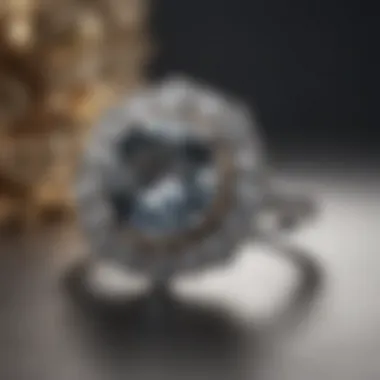

Victorian Era Styles
During the Victorian era, from 1837 to 1901, engagement ring designs were heavy with symbolism and ornate details. Popular materials included gold, alongside a variety of gemstones. Rings featured intricate engravings and sometimes incorporated hidden messages. A distinct style was the use of rose-cut diamonds, which allowed for more light reflection than previous cuts.
Victorian rings often showcased birthstones or cluster styles, holding personal significance for the wearer. This period emphasized individuality, as the rings were usually handcrafted by skilled artisans. In summary, Victorian styles illustrate acceptance of emotional narratives in ring design.
Art Deco Influence
The era of Art Deco emerged in the 1920s and continued into the 1930s. Recognized for its geometric shapes and bold colors, this design movement aimed to showcase prosperity and luxury. Rings from the Art Deco period often featured platinum settings, which allowed for intricate and precise designs. The use of colored gemstones like sapphires and emeralds also gained popularity during this time, shifting away from traditional diamond-only designs.
Art Deco styles can be characterized by
- Clean lines
- Symmetrical patterns
- Unique cuts such as the brilliant cut diamond.
Emphasizing abstraction and streamlining, Art Deco rings remain a favorite for those desiring elegance and sophistication.
Modern Minimalism
In recent decades, the design philosophy of modern minimalism has taken hold in engagement ring design. Moving away from ornate styles, minimalistic rings favor simplicity and understated elegance. Typically, they are crafted with a single center stone, often a diamond, set in a delicate band. Popular among contemporary couples, these designs prioritize clean lines, often utilizing white gold or platinum for a sleek finish.
Modern minimalism not only embodies a sense of purity but also makes a statement about lifestyle choices. Eco-friendly practices are often integrated into the creation of these rings, appealing to a growing demographic that values sustainability. The designs illustrate a move towards personalization and individual significance.
As trends continue to evolve, the engagement ring retains its value as a significant marker of commitment and love.
Craftsmanship and Artistry
Craftsmanship and artistry play a pivotal role in the world of engagement rings. This section delves into the significance of these elements, distinguishing between unique, handcrafted pieces and those that are mass-produced. The art of creating engagement rings goes beyond just technical ability; it encapsulates a deep understanding of materials, design, and the emotional context surrounding these symbols of commitment.
Handcrafted Versus Mass-Produced
When considering engagement rings, the debate between handcrafted and mass-produced options is critical. Handcrafted rings are made by skilled artisans who spend significant time refining their work. This meticulous approach ensures that each piece is unique and embodies distinct characteristics that reflect the wearer’s personality.
Benefits of Handcrafted Rings:
- Customization: Each ring can be tailored to fit personal preferences, making it a true reflection of love.
- Quality: Artisans often use higher-quality materials, focusing on detail and durability.
- Heritage: Buying a handcrafted piece often means supporting local artisans and sustaining traditional craftsmanship practices.
On the other hand, mass-produced rings are created using assembly line techniques, allowing for lower costs and faster production. While they might lack the personal touch of handcrafted rings, they do offer a range of styles accessible for different budgets. However, this often results in a more generic look that might not resonate deeply with the buyer.
The Role of Artisans
Artisans play a crucial role in the craftsmanship of engagement rings. Their expertise transcends basic jewelry-making skills, incorporating design insight and an understanding of gemstone properties. These skilled professionals transform raw materials into stunning, wearable art.
Their contributions include:
- Design: Artisans typically create unique designs, taking inspiration from various influences to create rings that stand out.
- Sourcing Materials: Many artisans prioritize ethically sourced gemstones, ensuring that their pieces not only look good but also support sustainable practices.
- Personal Connection: Engaging with artisans allows couples to connect with the story behind their ring. This connection often enhances the emotional value of the piece.
"The integrity of craftsmanship is vital in retaining the true spirit of engagement rings."
Personalization in Engagement Rings
Personalization in engagement rings plays a crucial role in the way individuals express their love and commitment. Choosing a ring is not just about selecting a piece of jewelry; it is about crafting a symbol of a unique relationship. Personalization adds layers of meaning and sentiment that generic options simply cannot match.
When couples decide to personalize their engagement ring, they engage in a creative process that allows them to reflect their character, values, and shared experiences. This can be accomplished through various methods such as custom designs, unique engravings, or the incorporation of meaningful gemstones. The importance of personalization is underscored by its capacity to transform a standard ring into something deeply significant and entirely one-of-a-kind.
Personalized rings often become family heirlooms. They can be designed to be passed down through generations, making them embedded with both history and sentiment. Such rings are not just statements of love between two individuals, but also markers of legacy for families.
Custom Designs
Custom engagement rings are a prominent trend in the jewelry industry. Unlike mass-produced pieces, custom designs give couples the opportunity to work closely with artisans to create a ring that encapsulates their individual stories. This can involve selecting the shape, size, and type of gemstone, designing the band, and choosing the metal.
The process of creating a custom engagement ring often includes input from both partners, ensuring that the final product reflects their combined preferences. Factors typically considered in the design process include:
- Style: Whether they prefer vintage, modern, or eclectic designs
- Gemstone selection: This can include traditional diamonds or alternative gemstones that may hold special meanings
- Band design: Couples can opt for simple bands or intricate settings that match their personal style
Furthermore, custom rings can feature personalized touches, such as engravings on the inner band. Such engravings may include names, dates, or meaningful quotes, adding a level of intimacy that enhances the overall emotional value of the ring.
Significance of Birthstones
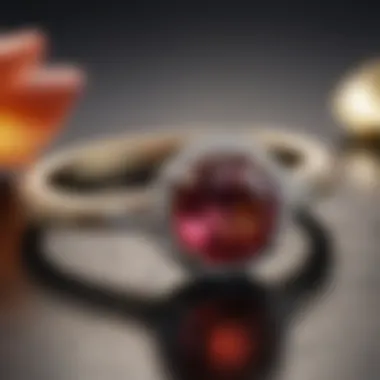
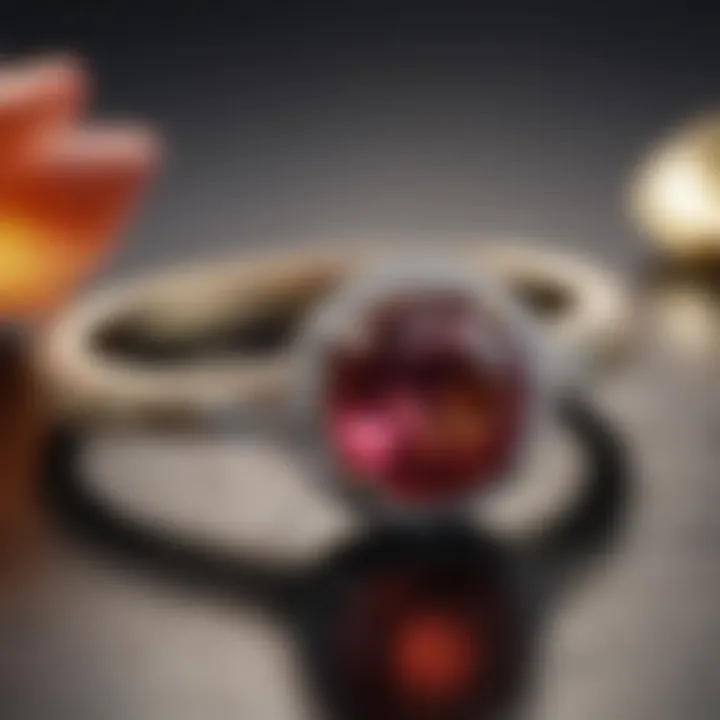
Birthstones have long held cultural significance and are often associated with personality traits or characteristics linked to specific months. Incorporating a birthstone into an engagement ring adds a personalized touch that can symbolize loyalty, love, and strength.
Each birthstone has its own unique attributes and meanings which can offer couples a sense of connection not afforded by standard diamonds. For example, sapphires, which represent September, are associated with wisdom and nobility. The emerald, representing May, signifies renewal and growth, while the garnet, linked to January, symbolizes romance and passion.
Choosing a birthstone can also offer practical benefits. Some couples may prefer the cost-effectiveness of alternative gemstones. Others are attracted to the beauty and uniqueness of less conventional choices. Ultimately, incorporating birthstones speaks to the heart of personalization by allowing individuals to anchor their engagement rings in meaningful tradition.
Personalization transforms engagement rings into deeply significant symbols, reflecting love, culture, and individual identity, making them unique to each couple.
Market Trends in Engagement Rings
The landscape of engagement rings has seen substantial transformation in recent years. The exploration into market trends is crucial for understanding both current consumer behaviors and the future of jewelry design. Understanding these trends can be beneficial for potential buyers and designers alike. It provides insight into which styles are gaining popularity, what gemstones consumers favor, and how sustainability plays a role in purchasing decisions. This section covers two primary trends: investment potential and sustainable practices.
Investment Potential
The engagement ring market is not merely about sentiments of love; it also represents a significant financial investment. The perception of rings shifts from simple jewelry to valuable assets. Many collectors and buyers view engagement rings as pieces that appreciate in value over time. When considering investment potential, several factors come into play:
- Gemstone Quality: Higher quality gemstones, particularly diamonds, sapphires, and emeralds, often retain or even increase their value.
- Design and Craftsmanship: Unique and handcrafted designs tend to have more demand, thus influencing their market value positively.
- Brand Reputation: Rings from renowned jewelers or brands can command higher prices due to their established prestige and trust.
However, prospective buyers must remain informed. Not all rings will appreciate, and factors such as channel changes in consumer desires can affect the market. The importance of provenance—the ring's origin and history—also becomes a key point in enhancing its value.
Sustainable Practices
In an era where environmental concerns are at the forefront, sustainability is a significant trend shaping the engagement ring market. Many consumers are becoming more discerning about their purchases and seek engagement rings that do not harm the environment or exploit workers. Here are important aspects to consider:
- Ethically Sourced Gemstones: Buyers increasingly prefer gemstones that are certified as ethically sourced. This includes diamonds with a Kimberley Process certification and lab-grown diamonds that require less energy and do not involve mining.
- Recycled Materials: Jewelers are increasingly offering rings made from recycled precious metals. This practice not only reduces waste but also lessens the ecological footprint of making new jewelry.
- Transparency: Companies that provide clear information about the sourcing of materials and labor practices tend to build trust with their customers. Transparency helps buyers make informed choices.
Maintaining Aesthetics and Value
Engagement rings are not only symbols of love and commitment, but they also represent a significant financial investment. It is essential to maintain the aesthetics and value of these cherished pieces over time. Proper care can preserve both their beauty and their monetary worth.
When discussing maintaining aesthetics, one must consider the physical appearance of the ring. Regular cleaning is vital to uphold its brilliance. Dirt, oils, and other substances can accumulate on the gemstone and metal settings, dulling their shine. In addition to cleaning, evaluating the condition of the gemstone setting and ensuring that prongs are secure can prevent loss or damage.
From a value perspective, the market can fluctuate based on trends and material availability. Keeping the ring in good condition can ensure it retains its value, should the owner ever decide to sell or pass it down.
"A well-maintained engagement ring tells a story, reflecting the care and attention given to it over the years."
Painstaking care might seem tedious but understanding its importance can encourage better practices for longevity.
Regular Cleaning Tips
Cleaning an engagement ring is a simple yet crucial process. Here are some effective cleaning tips:
- Use Mild Soap and Water: A mixture of warm water and mild dish soap works well. Soak the ring for about 20-30 minutes to loosen grime.
- Soft Brush: Utilize a soft-bristled toothbrush to gently scrub the stone and metal, avoiding harsh scrubbing that can scratch.
- Rinse Thoroughly: After cleaning, rinse under clean water to remove any soap residue. Ensure the drain is covered to prevent loss.
- Dry Properly: Use a lint-free cloth to dry the ring gently.
Regular cleaning should be performed every few weeks, depending on everyday wear. For rings worn daily, consider a professional cleaning every six months.
Storage Recommendations
Storing an engagement ring properly can further ensure its lasting beauty. Here are some suggestions:
- Individual Boxes: Store each ring in its box to prevent scratches. Many rings, especially those with intricate designs, benefit from this.
- Avoid Jewelry Overcrowding: Place rings away from other jewelry. Air-tight pouches or soft cloth bags can offer additional protection.
- Control Environment: Keep in a cool, dry place. Extreme temperatures and humidity can cause damage.
Investing time in both cleaning and appropriate storage will pay off. By establishing a routine, the ring can remain a stunning symbol of love for years to come.
Future Directions in Engagement Ring Trends
The landscape of engagement rings is continually evolving, influenced by cultural shifts, technological advancements, and changing consumer preferences. Understanding the future directions in engagement ring trends is crucial for enthusiasts, collectors, and designers alike. This knowledge helps in making informed choices as well as in anticipating market movements. Recognizing emerging styles and the role of technology not only enriches the appreciation of these rings but also highlights their significance in the broader context of love and commitment.
Emerging Styles
As societal values change, so too do the aesthetics of engagement rings. Here are some noticeable trends:
- Vintage Revival: Rings inspired by past decades are returning. This trend emphasizes intricate designs and unique gemstones. Collectors often seek these pieces for their historical significance and distinctive character.
- Mixed-Metals: Combining various metals like yellow gold, white gold, and rose gold is becoming popular. This approach allows for personalization and creates visually striking contrasts.
- Nature-Inspired Designs: Organic shapes and floral motifs are favored for their unique beauty. Such designs often mirror personal stories or shared experiences between couples.
- Non-Traditional Gemstones: More couples are opting for stones like morganite, opal, or colored diamonds, shifting focus from the classic diamond. This allows individuals to express personal taste, making their engagement rings truly unique.
This variety in styles shows how individuals express their identity through their engagement rings. With changes in social norms, the definition of beauty continues to expand beyond conventional norms.
Technology in Design
Advancements in technology have drastically transformed the jewelry design industry. Notable applications include:
- 3D Printing: This technology enables designers to create complex shapes with precision. It allows for rapid prototyping and customization, making it easier for couples to visualize their ring before purchasing.
- CAD Software: Computer-Aided Design facilitates intricate designs tailored to individual preferences. Designers can collaborate closely with clients, ensuring their vision comes to life with extraordinary detail.
- Blockchain: As buyers become more conscious of ethical sourcing, blockchain technology ensures transparency in the origin and authenticity of gemstones. This growing emphasis on sustainability influences buying decisions and builds trust in the market.
- Virtual Reality (VR): Stores are now offering virtual try-ons using VR technology. This helps clients explore options and see how different styles look on their hands, all from the comfort of their homes.
These technological innovations are reshaping how consumers interact with engagement rings. As the market continues to develop, understanding these trends can significantly impact purchasing and design decisions.
The future of engagement rings is about personal expression and ethical considerations, highlighting the evolving nature of love and commitment.







